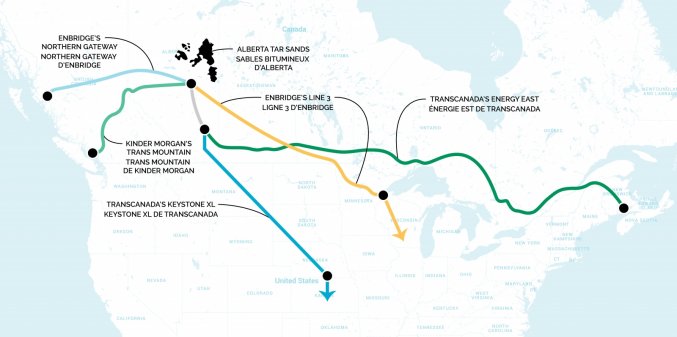|
|
|
|
It's 1:30 am as I write this from a hotel room in Fort McMurray, Alberta a “boom town” in the heart of the Alberta Tar Sands region of so-called Canada. .
Sleep evades me as I am unable to shake what I saw at work this week and think about what lies ahead for the Indigenous communities of this region.
Earlier today, I was given a tour of the oil production operations in Fort McMurray, in what many call the belly of the tar sands beast and saw first hand the devastating effects the tar sands is reeking upon the local Indigenous communities.. The area is the starting point for several oil pipelines Indigenous communities are fighting throughout Canada and the United States. I returned to my hotel with a heavy heart- literally sick to my stomach from the toxic fumes that hang in the air so thick you can see it as it clings to the siding of the homes of Dene, Cree and Métis peoples.
A study conducted in collaboration with the Athabasca Chipewyan and Mikisew Cree First Nations, the University of Manitoba study found fish and animals consumed as part of a traditional diet contained unusually high concentrations of contaminants emitted during the extraction and upgrading of bitumen creating higher rates of cancer to the impacted communities. The study took samples taken from beavers, ducks, fish, moose and muskrats which showed high concentrations of carcinogenic polycyclic aromatic hydrocarbons and levels of arsenic, mercury, cadmium and selenium. These toxins have adverse effects to their brain and nervous system of young children.
 Syncrude Giants of Mining Monument, Wood Buffalo, CA.
Littered across the beautiful Boreal Forest these nations live amongst are unlined tailings ponds that contain the highly toxic, deadly waste from the extraction of the heavy crude oil, bitumen. While these “ponds” look like little bodies of water there are many precautions like sound cannons, radar, and scarecrows to try and make sure no one enters the deadly pools of toxic waste. These “ponds” are unlined and the deadly toxins they hold leak into the environment, including drinking water. Nearby communities have documented higher rates of cancer, attributed to contaminated food and water sources.
Community members told us that far too often Suncor admits to them months after a toxic spill that their waterways have been poisoned.
Tailings Pond outside of Fort McKay
Violence against Indigenous land from forced industry begets violence against Indigenous women and children. With extraction industry comes human trafficking which fuels our Missing and Murdered Indigenous Women epidemic. A recent study by the Sovereign Bodies Institute found that Alberta has the highest rate of Missing and Murdered Women.
Two industrial man camps are being built as part of pre-construction for the KXL pipeline on the east and west side of my tribal nation, Fort Peck. These camps only add to the violence the Bakken Oil Field has brought to the community of Fort Peck. Missing family members are all too common for our communities.
Man Camp in Wood Buffalo
To see the devastating effects dirty tar sands development continues to have on Indigenous people's culture, economy, and health left me feeling a bit overwhelmed with the fight ahead of not just my tribal nation Fort Peck, but all of Oceti Sakowin.
We will shut down the dirty tar sands and all the black snakes it feeds, we will stop the KXL, our lives depend on it.
When the call sounds to come to camp to stop the KXL pipeline, will you stand with us?
Click the image below to sign up for #NoKXL updates.
|
|
Jennifer K. Falcon
(Hay Shaw Wiÿa)
Communications Coordinator
Indigenous Environmental Network
To Make A Tax Deductible Donation:
Paypal.me/IENEarth
###
Established in 1990, The Indigenous Environmental Network is an international environmental justice nonprofit that works with tribal grassroots organizations to build the capacity of Indigenous communities. IEN’s activities include empowering Indigenous communities and tribal governments to develop mechanisms to protect our sacred sites, land, water, air, natural resources, the health of both our people and all living things, and to build economically sustainable communities.
|
|
|
|
|
|
|
|